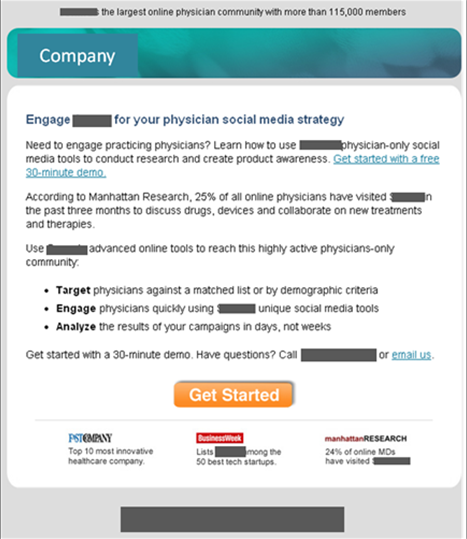Testing one, two. Simply running an a/b split with all your marketing campaigns can pay dividends in the end. It’s as elementary as a nursery rhyme.
To run a split test, you create two or more messages (either with different content or just a different subject line) and send the messages to randomized, equal portions of the larger list. You can then deliver the message with the best results, “the winner”, to the remainder of the list.
Which Treatment Received 104% more clicks?
Version A

Version B

Email B is the winner, according to Aaron Mandelbaum, CEO of StyleQuest, for the eight reasons below:
- Lead With a Giving Hand. In the header of Version A, I am already asked to take action; “Engage.” Version B leads with a giving hand by speaking to me early and precedes asking for anything by using the word “gives” instead. In a give-and-take world, giving first always wins.
- Don’t Rush Me.Version A opens with “Need to engage….?” They have already given me an opportunity to say no, and I haven’t even gotten to the second sentence. With a “no” answer, I am hitting delete without getting to their value statements. Version B uses the first paragraph to get right to the point. Numbers like 68 and 35,000 automatically grab my attention in a sea of text and sandwiched between words like “specialties, drugs, products, and procedures” the email is becoming more targeted.
- Court Me, Don’t Force Me. The section of bullets preceded by “engage” in version B and “use” in version A, although subtle, speaks to me in a softer more suggestive tone, as opposed to a harsh directive like “use.”
I do, however, like the bold first words of each bullet in version A. “Target, Engage, Analyze” all words that speak to value and draw me to read the rest of those bullets, where version B does not enunciate key takeaways. For example, I would have liked to have seen “real-time, observe, and stimulating” highlighted in some way.
- 4. Use Transparency With Your Phone Numbers. Version B has a “Call Us Direct” call-to-action (CTA) at the top of the email. It is always nice to be able to pick up the phone without needing to Google the customer service phone number. Granted you will have to go through an automated system for 20 minutes to speak to someone, but sometimes that is more comforting than waiting for a response to an email reply. And although version A does offer this option with a phone number, it is at the end of the email, and however insignificant that might appear to the 104% clicks delta, the benefit of having it in the top right corner of the note adds another advantage to conversion for email B.
- Tell Me More. Closing CTA is stronger in version B. I would more likely act on the “See How it Works” in version B rather than the “Get Started” in version A. “See How it Works” implies a non-invasive discovery process dictated by my direction. “Get Started” suggests give something. Give your email address, personal information, maybe even a credit card number.
I don’t want to “Get Started” just yet, I want to first “See How it Works.” Speak softly to the “awareness” part of the sales funnel as you attempt to add value and move the lead to “consideration.”
- Don’t Get Ahead of Yourself with Endorsements. The endorsements that are listed on the bottom of version A and the right side of version B are interesting. Despite the perception of added credibility, I’m not sure that I agree with the use of endorsements in this type of message. I would be interested to know if version B were tested with or without the endorsements and which garnered more clickthroughs. I’d prefer to see the endorsements used at the bottom in the footer as was done in version A. They appear to be distracting me from the value statements in version B. This minimal advantage to version A is still not enough for me to say that it out performed B.
- Use the KISS Theory. The header of version B is more appealing to me than A. It is clean, and I believe in the KISS theory – Keep It Simple Stupid.
- Subject Lines Matter. A few questions that remain unanswered are, “What were the subject lines of the emails and was one CTA button above the fold in A vs. B?”
Have you run a split test or two or three this month? Doing so could mean the difference between a 10% or 110% click-through rate. Doing so could mean the difference between fantastic ROI vs. a campaign that needs CPR.

